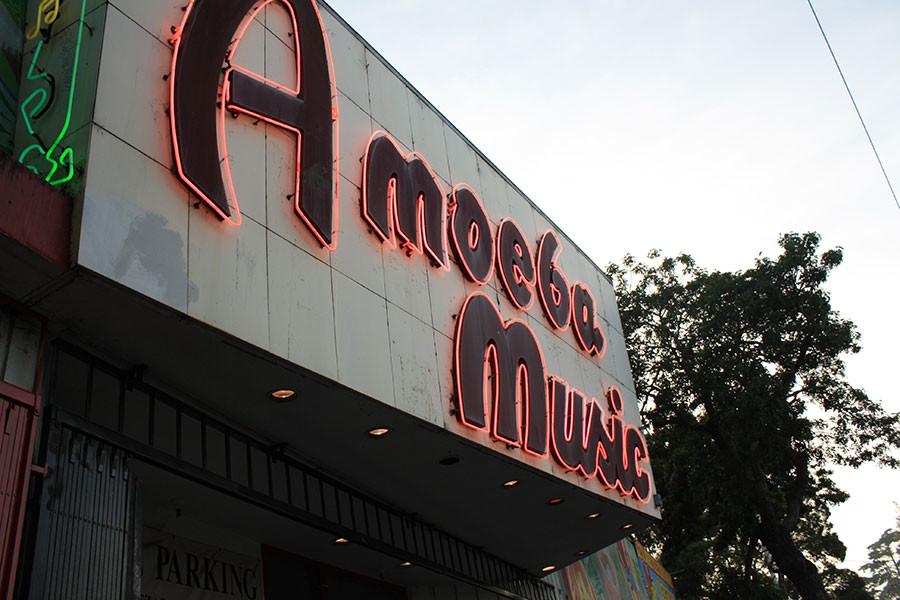Vinyl makes a comeback within a younger generation
Founded in 1997, the independent record store Amoeba Music is located on Haight street.
Vinyl once seemed like a nostalgic remnant of the past, but recently, it has been majorly revived. From 2013 to 2014, vinyl sales increased by 52 percent, with 3.1 million more records sold in 2014 than 2013. With local independent record stores, like Amoeba Music and Rasputin Music, and larger retailers like Urban Outfitters now selling vinyl records, it’s an easy, and multi-generational trend to join.
Prices per vinyl record range from as little as fifty cents per used record, to hundreds of dollars for first pressing, never played, collectable record. Thus, collections can cater to the wants of the owner.
“We have this closet in our house that I never go into, and it has luggage in it, and I found all these records and I was like ‘Mom … what are you doing? What are we doing with all these records?’” said Julia Shorofsky (‘15). Inspired by this discovery, she too has become a part of the vinyl revival.
However, the great debate that haunts this trend is whether or not vinyl creates a purer sound than digital formats, such as Spotify and iTunes.
“I don’t use Spotify, but I do use digital because I love music. It’s really rare for me to go a day without listening to music. But for me, I’ll buy it on iTunes and that will be fine,” said Shorofsky.
“I do like the sound quality better listening to records, but I also like the activity of listening to records,” agreed Sarah Levin, the Urban librarian.
Urban musician César Hamilton (‘15), who makes music under the alias “C-Rex”, also objects the use of Spotify and supports vinyl sales.
“I think it’s a good way to support the artist, and also I think pressing is really important for new artists, and if they’re going to be pressing and no one buys it, there’s no point in doing it,” said Hamilton
The love of physically putting on a record is shared by many. Shorofsky sees listening to records as method of avoiding other online distractions: “If I’m on my computer and I’m searching for music on my computer, it makes me go into this whole downward spiral where I’m like ‘Oh look, Facebook’s there too!’” Shorofsky continues, “When I put a record on, like annotate with a record on, I’m still listening to music, which I love to do, but I also don’t need to be distracted by all these other things I could possibly be doing online.”
For some within younger generation, there is a reminiscence quality that reaches beyond the fact of being trendy. “This guy was showing me these records and he was like, ‘It’s a little beat up’ and I was like, ‘That’s okay!’” Shorofsky added, “there’s something about a record that kind of pulls you in, and I think it’s cool people are starting to buy them more. I don’t really want them to die out.”












